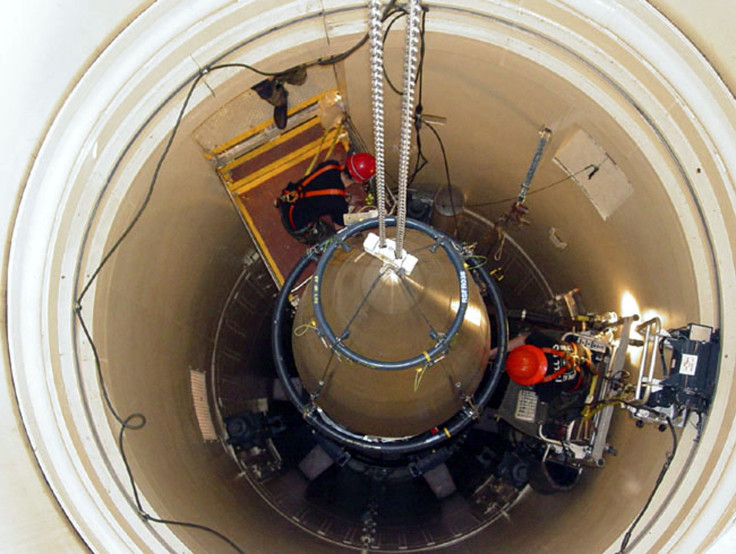Nuclear Missile Damaged Due To Human Error In 2014, US Air Force Says

Maintenance errors by three airmen of the U.S. Air Force damaged a nuclear-armed missile in its silo in May 2014, the Air Force said in a statement, the Associated Press (AP) reported Friday. The accident did not cause any injuries or pose any risk to public safety, the statement added.
The full report into the incident was classified on Nov. 9, 2015, according to the Air Force’s statement, which identified the missile as a Minuteman III intercontinental ballistic missile. It said the missile “became non-operational” during a diagnostic test on the evening of May 16, 2014, the AP reported. The chief of the “mishap crew” who went to troubleshoot the Minuteman III the next morning "did not correctly adhere to technical guidance," which subsequently damaged the missile.
The actual cause of the accident, though established by “clear and convincing evidence,” was also classified, the statement said, but mentioned there being four factors that contributed to the accident. The chief of the mishap crew and the other two airmen on the team were immediately stripped of their certification to work with nuclear weapons and retrained for “over a year” before being returned to nuclear work.
Lt. Col. John Sheets, spokesman for Air Force Global Strike Command, said it was possible that one or more among the three airmen could still face disciplinary action, according to the AP.
The Air Force also said it had “strengthened” technical guidance, modified training curriculum and shared information about the conditions that led to the mishap with other units that operate Minuteman III missiles, in order to prevent a recurrence of the mistake.
The damaged missile was removed from its underground silo in northeast Colorado. The Minuteman III has long exceeded its planned service life, and the Air Force is planning to replace it, the AP reported.
© Copyright IBTimes 2024. All rights reserved.





















